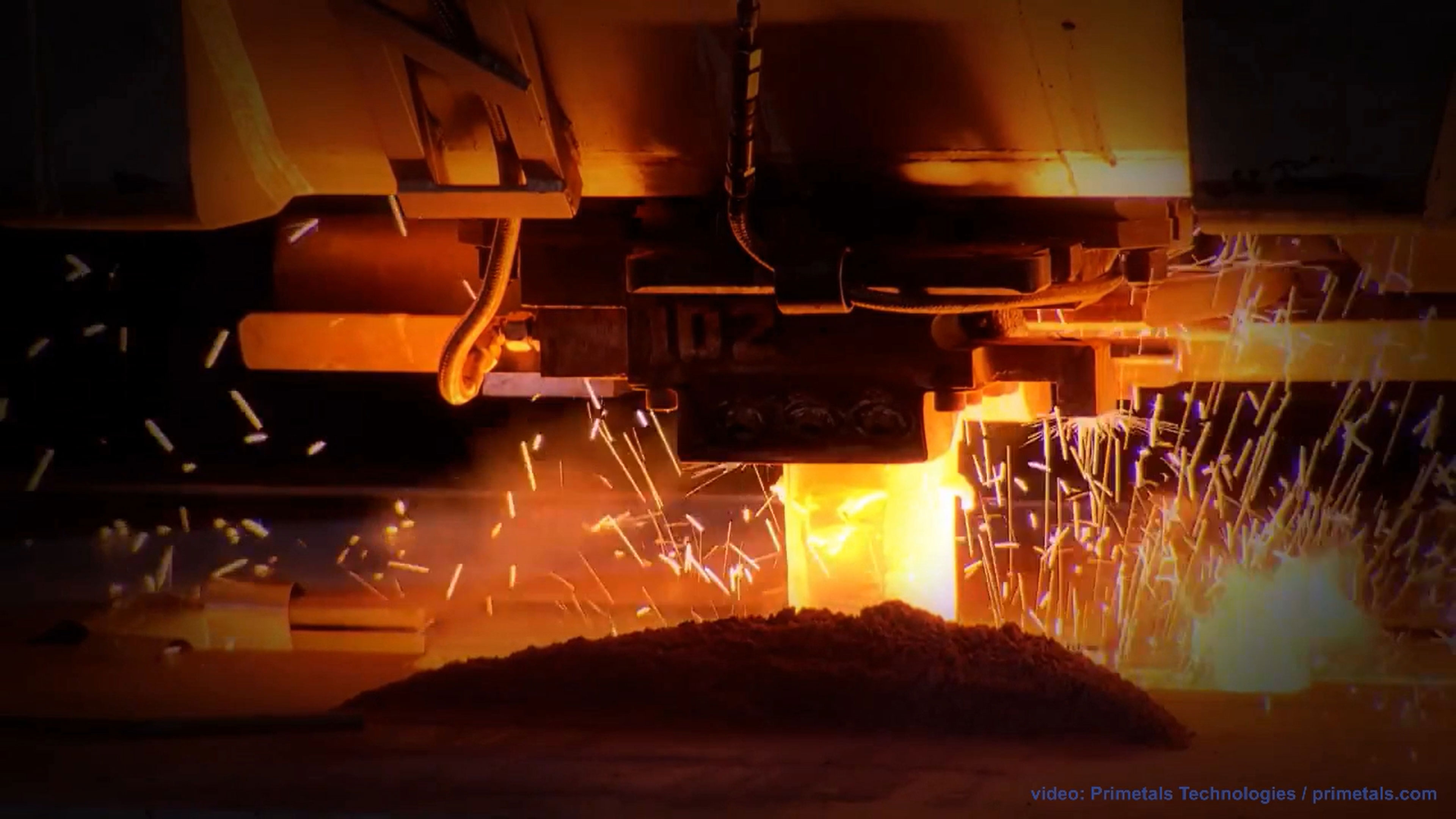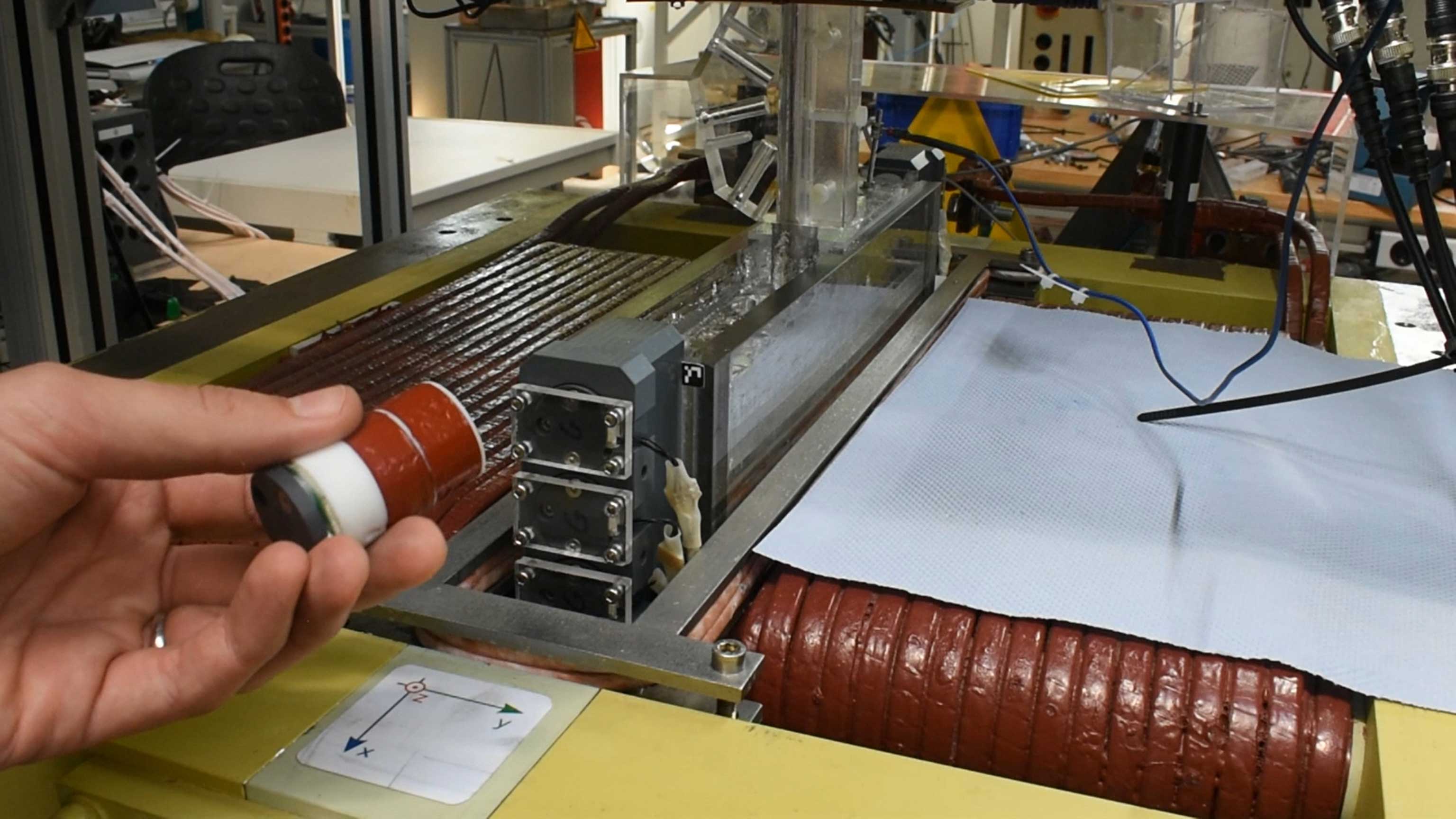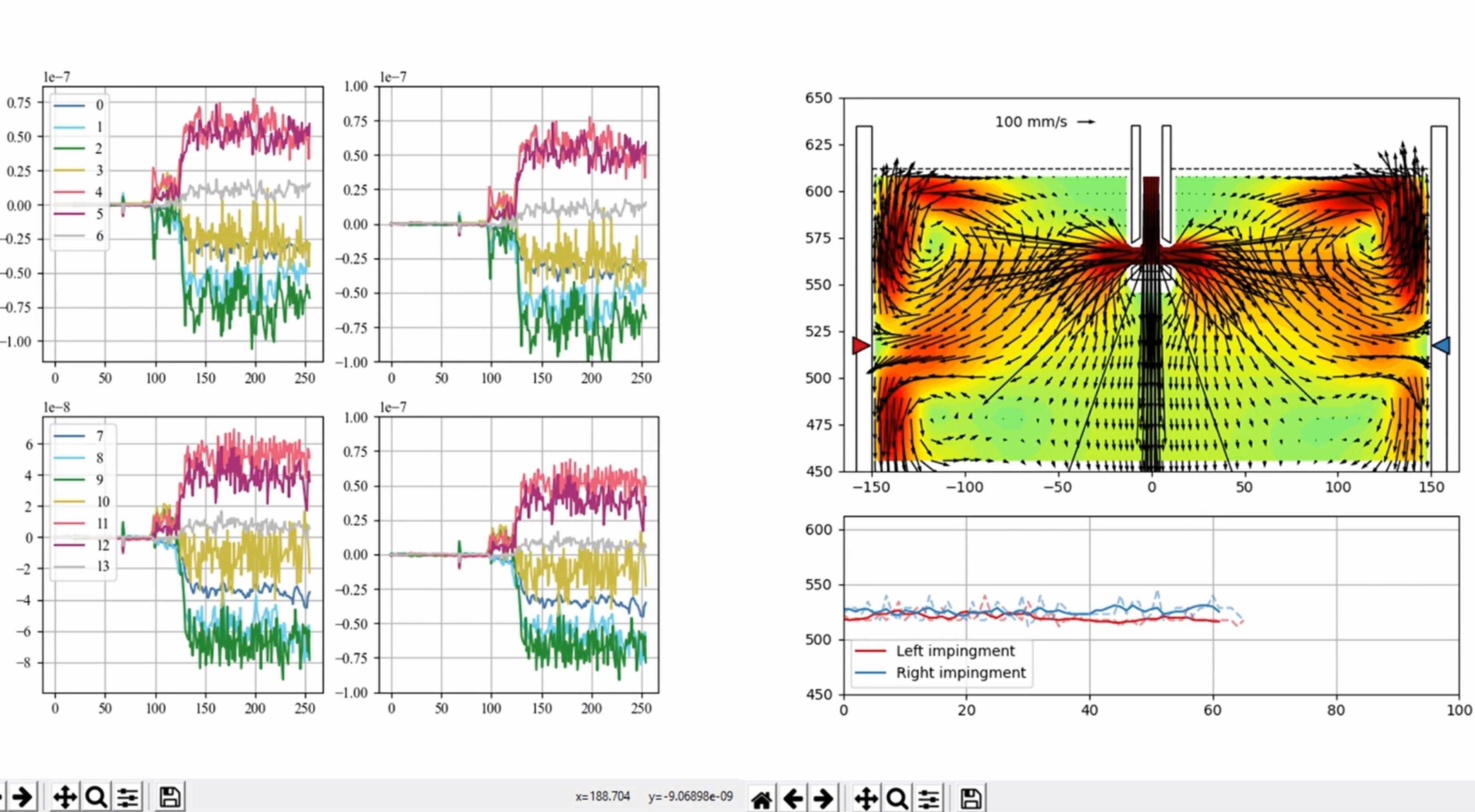

The LTT24's in-line measurement technology is necessary to control liquid metal flows and avoid large quantities of rejects
Knowledge of the flow properties of liquid metals is essential in many industrial processes. In the continuous casting of steel, which is used for over 95% of global steel production, unfavorable flow conditions can cause surface defects, unwanted inclusions and other material defects in the steel and render the cast product unusable. In-line measurement technology, such as that used in the LTT24, is therefore urgently needed to control the flow of liquid metal and avoid large quantities of rejects.
Liquid steel’s optical opacity prohibits established optical methods, and the high temperature in the region of 1500°C (2700°F) makes a non-contact measurement method desirable. Contactless inductive flow tomography (CIFT), developed at the research center Helmholtz-Zentrum Dresden-Rossendorf (HZDR), is based on the principle of induction of electric currents in electrical conductors and makes use of liquid steel’s high electrical conductivity. An external magnetic field is distorted by the flowing liquid metal. This distortion can be measured outside the liquid and carries a “fingerprint” of the sought-after velocity field, which can be reconstructed by solving a linear inverse problem.

What makes the measurement process challenging is the fact that the distortion of the magnetic field b is many orders of magnitude smaller than the external magnetic field B. For example, with a typically applied external B of 1 millitesla, the flow-induced distortion to be measured is only about 100 nanotesla, which is less than half a percent of the Earth’s magnetic field!
But CIFT still allows performance of reliable and robust measurements at these scales. By using an alternating field with a frequency in the order of 1 Hz, interference can be filtered out of the measurement signal using the lock-in principle. Sub-millitesla signals are measured by induction coils with more than 300,000 turns (less than 30 mm in size!).

Highly synchronous measurement input channels with a dynamic range of 120 dB and extremely low noise are required to enable signal demodulation in amplitude and phase with an accuracy of 6 orders of magnitude. At the same time, the measurement input channels must be extremely high-impedance (order of magnitude: 1 TOhm) to enable precise voltage measurement at the induction coils, which have a very large and temperature-dependent electrical resistance of the order of 0.5 MOhm due to their high number of turns. The LTT24 series high-precision Data Acquisition Systems (DAQ) from Labortechnik Tasler GmbH are the first choice for such highly demanding measuring tasks.

As part of the EU project TOMOCON, CIFT could be used for the first time ever for targeted flow measurement and control at the HZDR’s mini LIMMCAST test facility, a 1:6 scale model of a continuous casting plant. The plant is operated with GaInSn, a eutectic liquid metal alloy that has an electrical conductivity and density similar to steel but is already liquid at room temperature.
The flow in the plant that CIFT detects in real time can be influenced by controlling an electromagnetic brake (EMBr). The EMBr generates a 200 mT magnetic field for this purpose. Real-time compensation of the effects that magnetic field changes have when the EMBr is switched on and off is hugely challenging when achieving a measurement accuracy of about 10 nT. By combining the engineering expertise available at the HZDR and the pioneering Tasler measurement technology, the experiment impressively demonstrated the feasibility of the CIFT measurement technology despite all the challenges.
If you’re interested in a similar project, or would like to know what our marvelous measuring technology can help you with:
contact us directly!